Erythrina herbacea
(Coralbean)
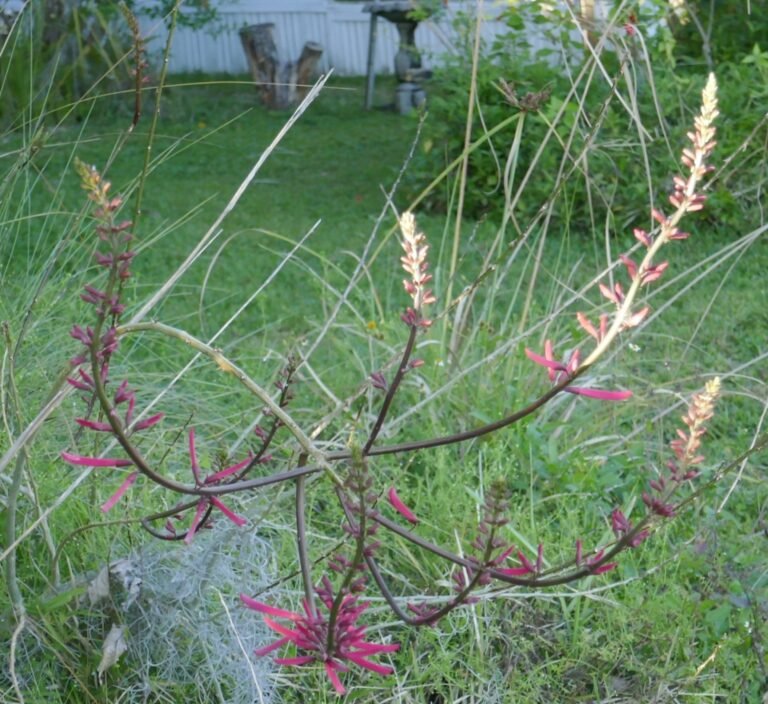
Common Names, Latin Name, and Family
The common name is coral bean and another common name is Cherokee bean.
The Latin name is Erythrina herbacea.
Coral bean is in the Leguminous, bean, family.
Some literature lists an Erythrina arborea as a separate species found in south Florida; however most authors believe this to be merely a climatic adaptation. As was stated earlier it will become tree-like if not taken by a freeze.
Erythrina is derived from ‘erythros’, which in Greek means red, and herbacea which means not woody.
Form
Coral bean is a deciduous shrub that grows from 3 to 24 feet in height.
In south Florida, or protected areas that do not freeze, it can attain a tree like stature of 24 feet in height.
Leaves
The leaves are deciduous, alternate and compound with three arrow-head shaped leaflets that are 1 to 3 inches in length.
The stems have thorns that point downward.
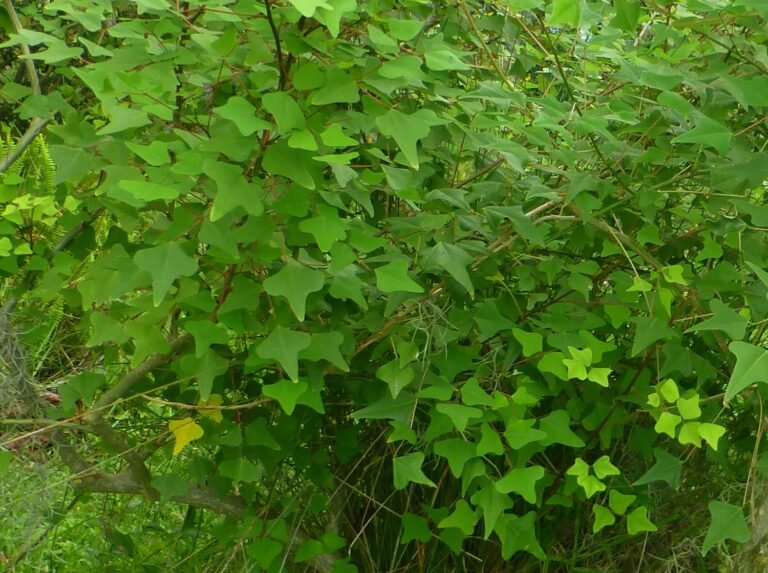
Flowers
The 2 inch, red tubular, flowers appear in the spring before the leaves appear.
The blooms are produced from the prior year’s growth, therefore it is important to not prune away last year’s growth in the spring. It may look like a bunch of twigs, but your patience will be rewarded in the spring with bursts of red flowers.
The spring bloom coincides with the ruby-throated hummingbird’s migration. It appears that these plants have adapted their blooming cycles to their pollinator’s migration cycle.
The literature states that they bloom in the spring and fall, but I haven’t seen fall blooming in my area of central Florida.
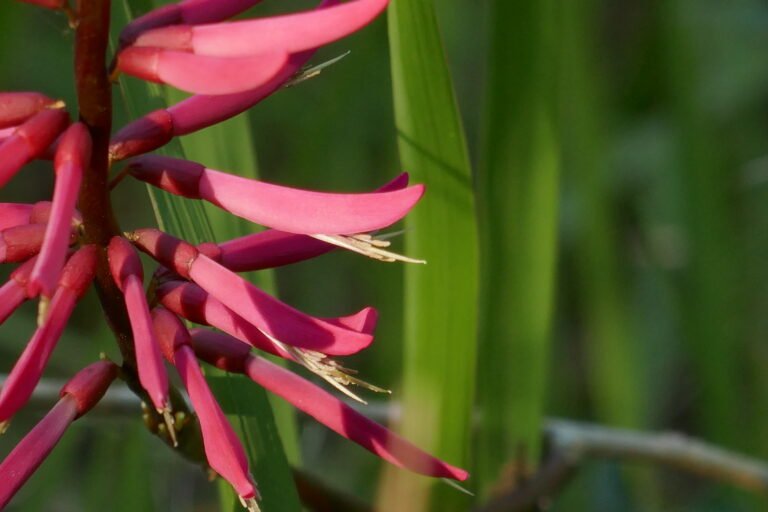
Fruit / Seeds
Once the flowers are pollinated a green seed pod develops. The beans inside are white at first and turn bright red upon maturity.
Once the pod ripens it will break open along its seam to expose the bright red mature beans.
The seeds are poisonous. Removal of the pods is the best way to safeguard against children, or pets, collecting them.
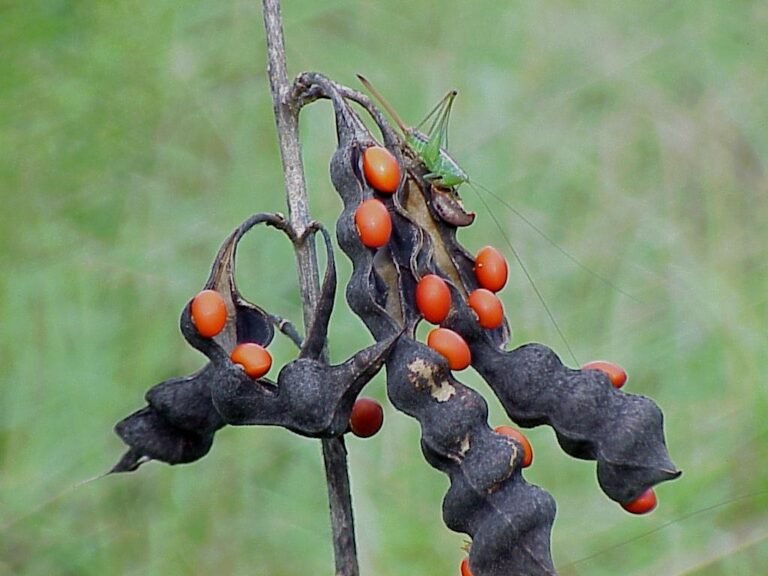
Habitat
Coral bean is generally found growing in coastal hammocks, inland hammocks and along road sides, but can also be found in open sandy woods and clearings.
Native Range
Coral bean is native to the southeast from North Carolina to Florida and west to Oklahoma and Texas. It is also found in Mexico.
It is found naturally occurring in almost every county in Florida.
Landscape Use
It is best planted in an out of the way place because of its thorns and poisonous seeds. A naturalized area is perfect.
In the home landscape it can be grown in part shade to full sun with average moisture.
If you plant it too close to paths or walkways the thorns will become a problem and the red seeds will be an attractive nuisance to children and pets. The seeds are poisonous.
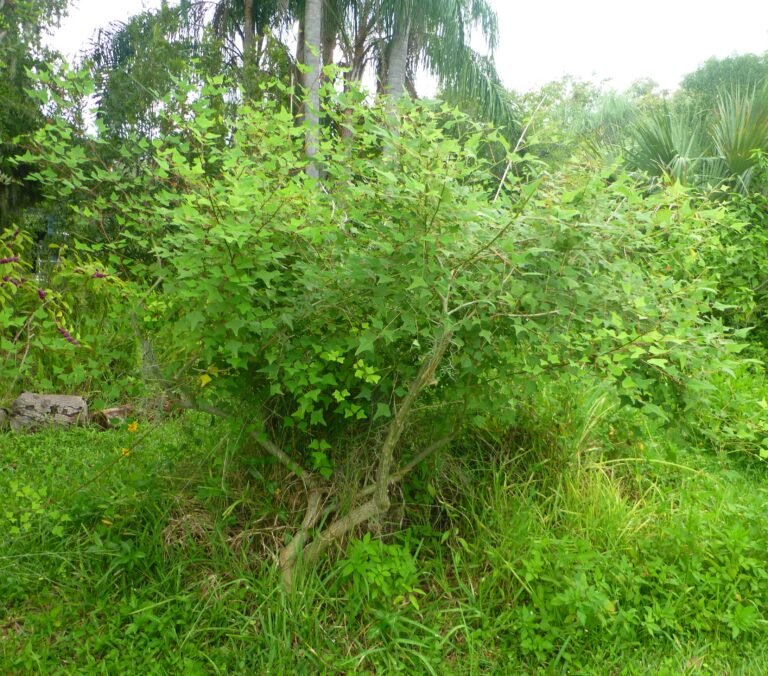
Wildlife Use
The flowers are a favorite of hummingbirds and large sulphur butterflies.
The spring bloom coincides with the ruby-throated hummingbird’s migration. It appears that these plants have adapted their blooming cycles to their pollinator’s migration cycle.

Propagation
It is very easy to grow from seed and grows very quickly. Within a year or two the plant will be blooming.
It also tolerates transplanting well. The root is a very large tuber that looks like a sweet potato.
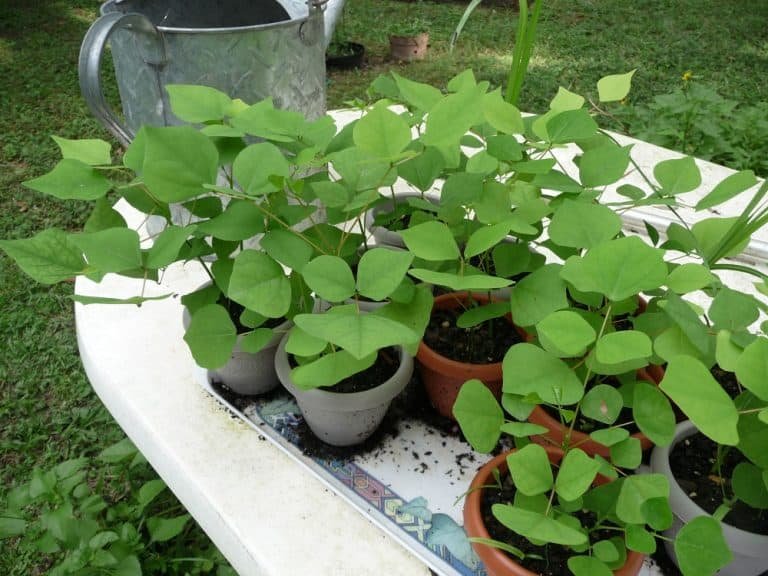
Next Article: Elderberry
